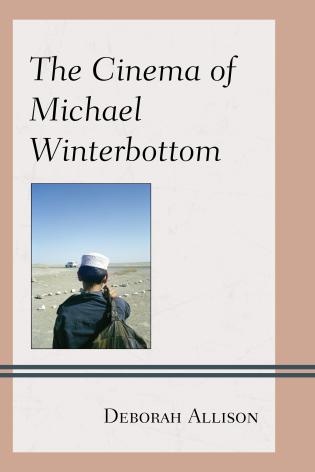| Deborah Allison, The cinema of Michael Winterbottom Lanham, Maryland: Lexington Books, 2013 ISBN: 9780739125847 US$32.99 (pb) 224pp (Review copy supplied by Lexington Books) |
 |
This is the second book-length study devoted to Michael Winterbottom’s films. It was commissioned as part of a “Genre Film Auteurs” series (with the other books in the series to date on John Dahl and Michael Mann), and one can see that Allison has had to shape her book in certain ways in order to fit within a genre and auteur framework. She uses the brief three-page Introduction to explain her selection of films and her approach to genre and auteur theory. Allison selected eight films and wrote a chapter on each, explaining that:
The book has not been designed as a comprehensive survey of Winterbottom’s output, nor is my decision to focus on some films and not others a comment on their relative merit. It is merely that the films I focus on lend themselves far more to generic categorization than the others. (x)
Allison acknowledges that genre nomenclature and taxonomy are contested and contestable, with not everyone agreeing that heritage films (to use one of her examples) constitute a genre. However, perhaps somewhat oddly in a book in this “Genre Film Auteurs” series, she argues that “this is not a book about genre” (xi): her approach is to use genre labels to assess the extent to which a given Winterbottom film works within and/or tests genre tropes. On the auteur front, she rightly notes that films are not the product of one heroic individual working alone, but are “the result of a process of collaboration for which the director takes the ultimate responsibility, but where the input of other individuals often remain clear in the final product” (x-xi). In Winterbottom’s case, he has collaborated many times with the same people: screenwriter Frank Cottrell Boyce, producers Andrew Eaton and Melissa Parmenter, and actors Shirley Henderson and Steve Coogan (amongst others).
The structure of the book follows Winterbottom’s career chronologically, with the first chapter on Butterfly Kiss (UK 1995), discussed as a road movie, and the last of the eight film chapters covers The Killer Inside Me (USA/Sweden/UK/Canada 2010); neo-noir. In between, there is: Jude (UK 1996): the heritage film; Welcome to Sarajevo (UK/USA 1997): war cinema; Wonderland (UK 1999): social realist drama; The Claim (UK/France/Canada 2000): the western; Code 46 (2003): science fiction; and The Road to Guantanamo (2006): docudrama. Each of the eight film chapters in turn follows the same structure, beginning with a synopsis of the film; introductory contextual information; a discussion of the selected film genre in connection to the film in terms of plotting, characterisation and style; concluding with a brief discussion of the film’s reception.
This structure, with individual films placed in water-tight compartments, limits Allison’s ability to make comparisons between Winterbottom’s films. Nor does Allison tend to refer to many other films when discussing film genres. However, questions of selection are inevitable and I don’t mean to quibble. One must select from a mass of material in order to construct anything: book or film. I found myself constructing my own combinations: thinking about The Trip (2010) as a road movie and buddy movie, and grouping Winterbottom’s three Thomas Hardy adaptations (Jude, The Claim and Trishna [2011]) into a trilogy. Allison wrote that “the ultimate aim of this book is to encourage critical reflection on Michael Winterbottom’s work” (xi), and I think she achieves this. I must thank her for sending me back to the films themselves, even if they were not included in her book (A Cock and Bull Story [2006]; 24 Hour Party People [2002]); no doubt because they resisted generic classification or lack of space and time precluded their inclusion.
Allison clearly has a real affinity and fondness for Michael Winterbottom’s cinema, at times expressing indignation with those who criticise his work: she has “little personal sympathy” with Stephen Hunter of the Washington Post, who found Code 46 boring (136); and reading Jonathan Foreman’s review of The Killer Inside Me in the Jewish Chronicle, in which he unfairly questioned whether the “violent misogyny” of the film could be linked to Winterbottom himself, brought her close to choking (186).
Michael Winterbottom is terrifically prolific and diverse in his cinematic output. It is difficult to write about someone who is still producing work, and Allison makes no claim to offer definitive statements. It remains to follow Winterbottom’s career in the years ahead, and the growth of critical analysis of his work, to which The Cinema of Michael Winterbottom makes a sterling contribution.
